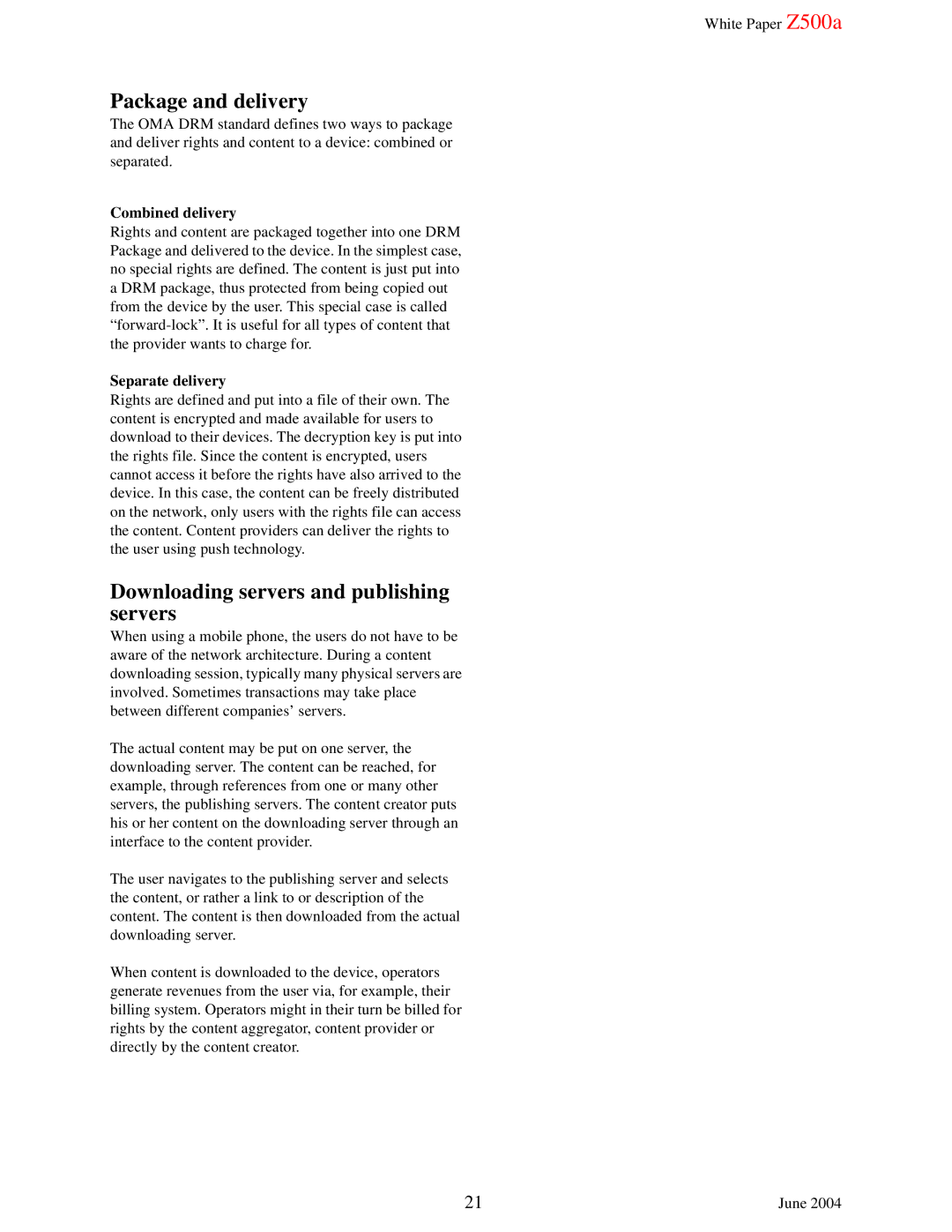White Paper Z500a
Package and delivery
The OMA DRM standard defines two ways to package and deliver rights and content to a device: combined or separated.
Combined delivery
Rights and content are packaged together into one DRM Package and delivered to the device. In the simplest case, no special rights are defined. The content is just put into a DRM package, thus protected from being copied out from the device by the user. This special case is called
Separate delivery
Rights are defined and put into a file of their own. The content is encrypted and made available for users to download to their devices. The decryption key is put into the rights file. Since the content is encrypted, users cannot access it before the rights have also arrived to the device. In this case, the content can be freely distributed on the network, only users with the rights file can access the content. Content providers can deliver the rights to the user using push technology.
Downloading servers and publishing servers
When using a mobile phone, the users do not have to be aware of the network architecture. During a content downloading session, typically many physical servers are involved. Sometimes transactions may take place between different companies’ servers.
The actual content may be put on one server, the downloading server. The content can be reached, for example, through references from one or many other servers, the publishing servers. The content creator puts his or her content on the downloading server through an interface to the content provider.
The user navigates to the publishing server and selects the content, or rather a link to or description of the content. The content is then downloaded from the actual downloading server.
When content is downloaded to the device, operators generate revenues from the user via, for example, their billing system. Operators might in their turn be billed for rights by the content aggregator, content provider or directly by the content creator.
21 | June 2004 |
